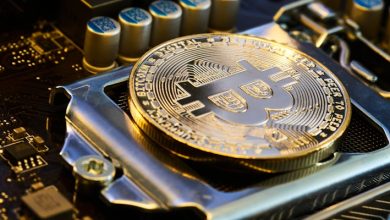The Role of NFTs in the Digital Economy: A Beginner’s Guide

- Understanding the Basics of NFTs
- Exploring the Impact of NFTs on Digital Assets
- How NFTs are Changing the Art and Collectibles Market
- The Rise of NFT Marketplaces and Platforms
- Potential Risks and Challenges of Investing in NFTs
- The Future of NFTs in the Digital Economy
Understanding the Basics of NFTs
NFTs, or Non-Fungible Tokens, have been gaining popularity in recent years as a new way to buy, sell, and trade digital assets. These unique tokens are built on blockchain technology, which ensures their authenticity and scarcity. Unlike cryptocurrencies such as Bitcoin or Ethereum, NFTs are one-of-a-kind digital assets that cannot be exchanged on a like-for-like basis.
NFTs are often used to represent ownership of digital art, collectibles, virtual real estate, and even in-game items. Each NFT contains metadata that specifies its unique attributes, provenance, and ownership history. This information is stored on the blockchain, making it transparent and immutable.
One of the key characteristics of NFTs is their indivisibility, meaning they cannot be divided into smaller units like cryptocurrencies can. This unique feature makes NFTs ideal for representing ownership of digital assets that are meant to be owned and traded as a whole.
Another important aspect of NFTs is their interoperability, which allows them to be bought, sold, and traded across different platforms and marketplaces. This interoperability expands the reach and liquidity of NFTs, making them more accessible to a wider audience of collectors and investors.
In summary, NFTs are a revolutionary new asset class that is reshaping the digital economy by providing a secure and transparent way to buy, sell, and trade unique digital assets. Whether you are an artist looking to monetize your work, a collector looking to diversify your portfolio, or an investor looking for new opportunities, NFTs offer a world of possibilities in the digital realm.
Exploring the Impact of NFTs on Digital Assets
The Impact of NFTs on Digital Assets:
NFTs, or non-fungible tokens, have been making waves in the digital economy as a new way to buy, sell, and trade unique digital assets. These tokens are built on blockchain technology, which ensures their authenticity and scarcity. As a result, NFTs have the potential to revolutionize how digital assets are valued and exchanged.
One key aspect of NFTs is their impact on digital art. Artists can now create and sell digital artwork as NFTs, giving them more control over their creations and the ability to profit from their work. This has opened up new opportunities for artists to monetize their art in the digital space.
In addition to digital art, NFTs have also been used to tokenize other digital assets such as music, videos, and even virtual real estate. This has created a new market for digital goods and services, allowing creators to reach a global audience and monetize their work in ways that were not possible before.
Overall, NFTs have the potential to reshape the digital economy by providing a secure and transparent way to buy, sell, and trade digital assets. As more people embrace this technology, we can expect to see even more innovation in the digital space and new opportunities for creators to showcase and monetize their work.
How NFTs are Changing the Art and Collectibles Market
NFTs have revolutionized the art and collectibles market by providing a new way for creators to tokenize their work and sell it as unique digital assets. This has opened up a whole new world of possibilities for artists, collectors, and investors alike.
One of the key benefits of NFTs is that they allow artists to retain ownership and control over their work, even after it has been sold. This means that artists can continue to earn royalties every time their NFT is resold, providing them with a passive income stream that was previously unavailable in the traditional art market.
For collectors, NFTs offer a way to own and trade digital assets in a secure and transparent manner. Each NFT is stored on a blockchain, which ensures that its ownership and provenance can be easily verified. This has made the art market more accessible to a wider audience, as collectors no longer need to worry about the authenticity of the pieces they are buying.
In addition to art, NFTs have also been used to tokenize a wide range of collectibles, including sports memorabilia, trading cards, and virtual real estate. This has created a new market for digital assets, with collectors and investors alike clamoring to get their hands on the latest NFT releases.
Overall, NFTs have had a profound impact on the art and collectibles market, opening up new opportunities for creators, collectors, and investors alike. As blockchain technology continues to evolve, we can expect to see even more innovations in this space in the years to come.
The Rise of NFT Marketplaces and Platforms
The rise of NFT marketplaces and platforms has been a significant development in the digital economy. These online platforms provide a space for creators to mint and sell their non-fungible tokens to a global audience. NFT marketplaces have made it easier for artists, musicians, and other creators to showcase and monetize their digital artwork in a secure and transparent manner.
One of the key benefits of NFT marketplaces is the ability to reach a wider audience without the need for traditional intermediaries. This direct connection between creators and buyers has democratized the art world, allowing for more diverse voices to be heard and valued. Additionally, NFT marketplaces offer a level of transparency and authenticity that is often lacking in traditional art markets.
As the demand for NFTs continues to grow, more and more marketplaces and platforms are emerging to meet the needs of both creators and collectors. These platforms offer a range of features and services, from minting and selling NFTs to providing tools for showcasing and promoting digital artwork. Some platforms even offer secondary marketplaces where NFTs can be bought and sold after the initial minting.
Overall, the rise of NFT marketplaces and platforms has opened up new opportunities for creators to monetize their digital assets and for collectors to invest in unique and valuable pieces of digital art. As the digital economy continues to evolve, NFTs are likely to play an increasingly important role in shaping the way we buy, sell, and interact with digital content.
Potential Risks and Challenges of Investing in NFTs
Investing in NFTs can be an exciting opportunity to participate in the digital economy and potentially earn significant returns. However, it’s essential to be aware of the potential risks and challenges that come with this type of investment.
One of the primary risks of investing in NFTs is the volatility of the market. Just like any other investment, the value of NFTs can fluctuate dramatically, leading to potential losses for investors. It’s crucial to carefully research and analyze the market trends before making any investment decisions to mitigate this risk.
Another challenge to consider is the lack of regulation in the NFT space. With the decentralized nature of blockchain technology, there is a lack of oversight and protection for investors. This can leave them vulnerable to scams, fraud, and other malicious activities. It’s essential to exercise caution and due diligence when engaging in NFT transactions to avoid falling victim to such risks.
Additionally, the technical complexity of NFTs can pose a challenge for newcomers to the space. Understanding how NFTs work, how to buy and sell them, and how to store them securely can be daunting for those unfamiliar with blockchain technology. It’s crucial to educate yourself and seek guidance from experienced individuals or professionals to navigate these complexities successfully.
Overall, while investing in NFTs can offer exciting opportunities, it’s essential to be aware of the potential risks and challenges involved. By staying informed, exercising caution, and seeking guidance when needed, investors can maximize their chances of success in the digital economy.
The Future of NFTs in the Digital Economy
In the digital economy, non-fungible tokens (NFTs) are poised to play a significant role in reshaping the way assets are bought, sold, and traded online. NFTs represent unique digital items that are stored on a blockchain, providing proof of ownership and authenticity. This technology has the potential to revolutionize various industries, including art, gaming, real estate, and more.
NFTs have gained popularity due to their ability to create scarcity and uniqueness in the digital realm. This has led to a surge in interest from collectors, investors, and creators looking to leverage this new form of digital ownership. As the market for NFTs continues to grow, it is important for businesses and individuals to understand the implications and opportunities that come with this technology.
One of the key aspects of NFTs is their potential to democratize access to digital assets. By allowing creators to tokenize their work and sell it directly to consumers, NFTs eliminate the need for intermediaries, such as galleries or auction houses. This can lead to increased profits for artists and greater transparency for buyers.
Additionally, NFTs have the potential to unlock new revenue streams for content creators in the digital space. By monetizing digital assets through tokenization, creators can tap into a global market of collectors and fans who are willing to pay a premium for unique and exclusive content. This can help creators generate passive income and build a loyal fan base.
Overall, the future of NFTs in the digital economy looks promising. As more industries and individuals embrace this technology, we can expect to see new business models, revenue streams, and opportunities emerge. By staying informed and exploring the possibilities of NFTs, businesses and individuals can position themselves for success in the evolving digital landscape.



